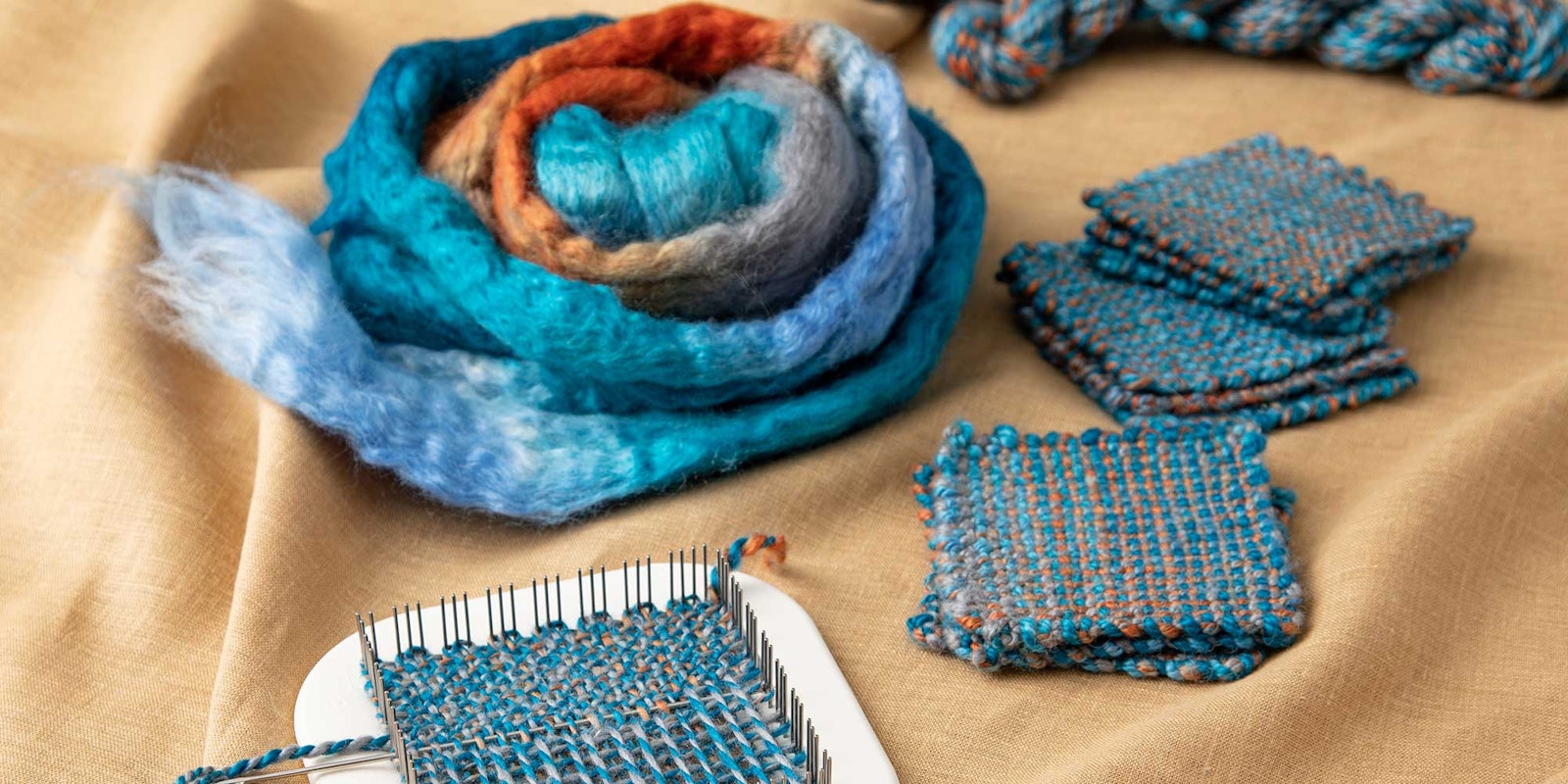There are many benefits to adding a pin loom to your toolbox. They’re a portable and convenient tool that’s perfect for a calming activity anytime—even on the go! It only takes a few yards of your precious handspun to weave a 4" square, and pin-loom weaving is a great way to use up scraps of yarn that are too beautiful to toss. Spin Off contributor Madeline Keller-King suggests trying pin-loom weaving as a quick method of testing your spinning samples. Read how she explored spinning three different yarn structures for pin-loom weaving, then find two bonus patterns that are great to pair with handspun: The Painted Pillow and the Ebb and Flow Pillow.
—Editors
I love pin looms. They are such accessible and useful tools. I find mine light and fun to use, and it’s a great way to quell the need for an instant-gratification project. A square counts as a finished object, surely. Each one is unique; each one is interesting in texture and color. Each square is a miniature documentation of choices that I get to make as a spinner—fiber type, fiber management, drafting technique, and so on. If you’ve been tempted to dip your toes into the world of weaving but aren’t ready to invest in something larger or more expensive, I recommend pin looms as a great addition to your spinner’s toolbox.
Not only are pin looms portable and convenient, but working with smaller looms also gives us options for sampling our spins as fabric and the opportunity to better understand the possibilities in how different yarns work up. As handspinners, we have not only the joy of spinning for our projects but also the ability to create “the perfect yarn” for our projects. We get to make choices and adjust when something isn’t working. Taking a lovely braid of fiber and making different choices for color management and yarn structure will produce very different results.
 Madeline's two-ply sample spun from a Bluefaced Leicester/silk blend.
Madeline's two-ply sample spun from a Bluefaced Leicester/silk blend.
Spinning
I chose this beautiful hand-dyed Bluefaced Leicester/silk top from Abstract Fiber for the contrast between the blue and the orange, and then I spun it up three different ways, aiming for a worsted-weight yarn per the recommended weight in the manual for the loom. I ended up with a two-ply, spun across the top and plied back against itself from a center-pull ball; a three-ply, which I chain-plied to keep the color repeats together to mimic the braid of fiber; and lastly, a three-ply fractal-spun yarn (see “The Fractal Stripe: One Method for Controlling the Striping of Painted Roving” by Janel Laidman, Spin Off Summer 2007).
For fractal spinning, the fiber is split differently for each ply, so the length of the color repeats varies among the plies. For example, I split the braid into thirds and spun one of the resulting strips onto one bobbin. For the second bobbin, I split the second third of the combed top in half and spun both strips end to end. This shortens the color repeats. For the last bobbin, I split the final third of fiber into four long strips and spun those end to end. All three bobbins were then plied together.
Each of these spinning techniques causes the colors in the dyed fiber to interact in different ways, both in the finished yarn and in fabric when knitted or woven.

The three yarn structures Madeline explored create different levels of optical color mixing. In the swatches shown here, there is a high degree of color mixing, which can subdue complementary colors, such as orange and blue.
Weaving
Schacht’s 4-inch Zoom Loom utilizes yarn differently from other looms such as rigid-heddle or floor looms. Essentially, instead of preparing all the warp first, you wrap half of the warp onto the loom, then half of the weft, and then the other half of the warp. The final step is to weave the remaining half of the weft with a long weaving needle. This changes the color sequences, so while these squares can be used to sample for larger weaving projects, be aware that even using the same yarn for both warp and weft on a floor or rigid-heddle loom will end up with different results when it comes to color. Still, I feel that pin-loom squares give a helpful visual representation of color interaction and are also just fun to make. I used the standard method of weaving described here for all of my squares, and I made three squares from each yarn to show how the colors shift for each yarn.
 Two-ply woven into three sequential pin-loom samples.
Two-ply woven into three sequential pin-loom samples.
Results
So fun! The spinning style either keeps the colors separated or blends them together to varying degrees. It would be difficult to say that any of these are “muted,” but I definitely see a difference, especially over the course of three

